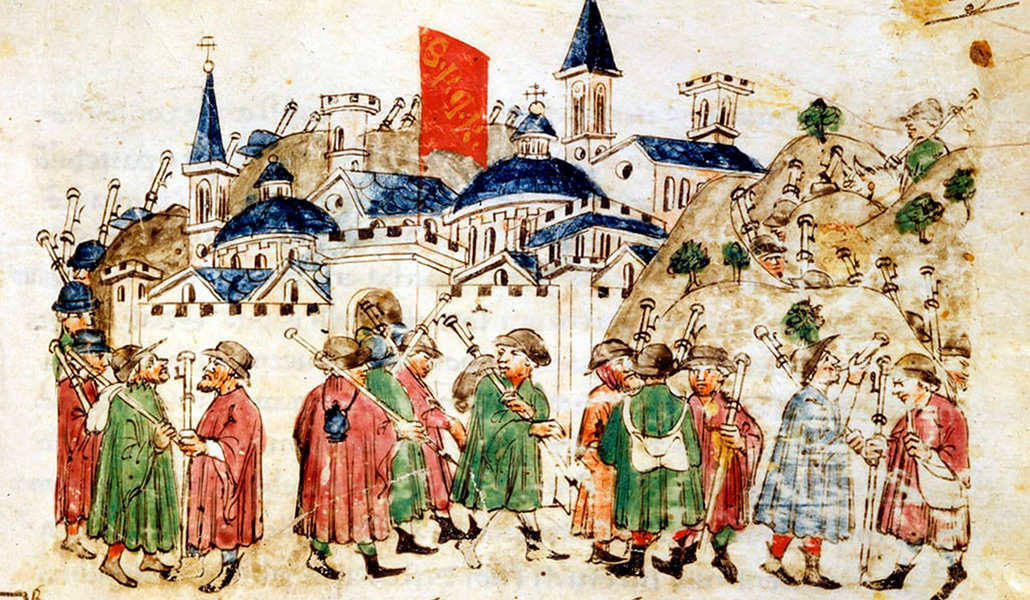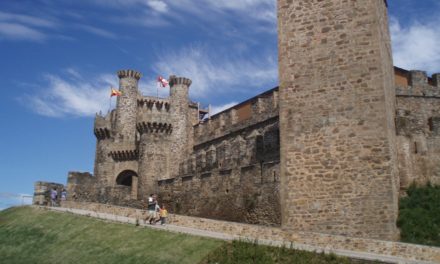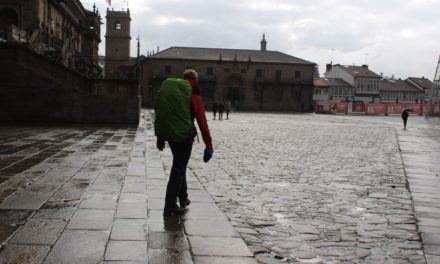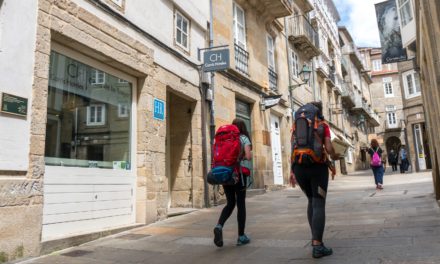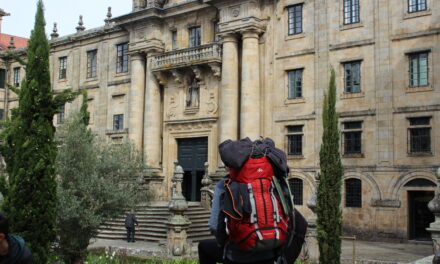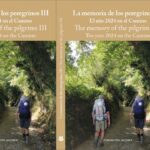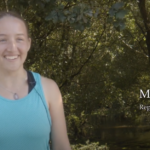Thanks to the dissemination and donations made by Camino Society Ireland, the very active Jacobean association of Ireland, we have been able to access a gem of pilgrimage literature: the book Medieval Irish Pilgrims to Santiago de Compostela. by Bernadette Cunningham. The author of the book – a researcher and librarian at the Royal Irish Academy in Dublin – introduces us to the long history of the link between Ireland and the Camino de Santiago through the stories of men and women who made the pilgrimage to Compostela between the 12th and 15th centuries.
In those times, the Camino de Santiago from Ireland was not established. The best-known pilgrimage in those lands in the 12th century was to the Holy Land, but reaching Jerusalem meant traveling 5,000 kilometers on foot – at least six months – or embarking for six weeks on ships and in unreliable climates. War conflicts and other difficulties made access to the Holy Land increasingly difficult, coinciding with the ever-increasing popularity of the pilgrimage to Compostela, promoted particularly during the archbishopric of Diego Gelmírez (1068-1140).
In this context, the Irish began to embark more and more towards Santiago, finally establishing a maritime itinerary of which many ports were starting points. The main ports of departure from Ireland were those of Assaore, in the north, Galway, Limerick, Dingle, Castlehaven and Kinsale in the west and southwest, ports from which ships with pilgrims left directly for the lands of Galicia, particularly towards the port from A Coruña. Further east, from the ports of Waterford, ships with pilgrims could also head to Galicia, but also, on occasion, pilgrims embarked first to the nearby English ports of Pembroke, Bristol, Plymouth, Poul or Southampton or even , to Bordeaux, in France, important ports from where there was a greater offer to leave for Compostela.
On the other hand, the pilgrims who walked to the ports also traced routes within the territory of Ireland, introducing their own “Visitandunt est”, that is, detours or paths that led them to the main local pilgrimage centers. What pilgrimage or cult centers stood out in medieval Ireland? Mostly St. Patrick’s Purgatory in Lough Derg, but also smaller centers such as Croagh Patrick in Mayo, Clonmacnoise in Offaly, Monaincha and Holy Cross in Tipperary, Mount Brandon in Kerry Glendalough in Wicklow.
Through official documents, historical chronicles, literary texts and lives of saints from the Anglo-Norman and Gaelic world, Cunningham reminds us of the reality that these medieval pilgrims lived through. Firstly, due to how long medieval pilgrimages took, and assuming there would be a very prolonged absence from the family and even the possibility that this separation would be final – all of this was clearly demonstrated by the wills that many pilgrims made before leaving. But the search for forgiveness, salvation, the benefits in an afterlife in which the majority strongly believed, justified for those pilgrims all the hardships and difficulties of their journey.
In his book Cunningham also tells us about the influences and motivations of the pilgrims which sent them beyond the confines of their world. Most of them were religious in nature, they set out in search of salvation, but there was also always a desire or search for adventure. And beyond these great motivations, also in the Middle Ages the ordinary, individual pilgrim makes his appearance, which still emerges today in each testimony or experience of a pilgrim: that each pilgrimage, in the past as in the present, has something unique, in his desire, in his motives- no two stories are the same.
Among the motivations, Ireland already appears in medieval times as one of the origins of penitential pilgrimages for those convicted by religious or criminal courts. The data offered by Cunningham’s text is very interesting, as he already cites Popes Nicholas (858-67) and Stephen V (885-91) allowing pilgrimages to condemned people in many areas of Christendom, including Ireland.
Regarding the experience of the Camino, in the long medieval pilgrimages the pilgrims were confronted with a kind of rite of passage with the beginning of their Camino, which could be read as a moment of separation. Subsequently, the pilgrims had to confront the journey itself, the arrival at the pilgrimage centre and the encounter with the ‘sacred’. From this moment of reaching Compostela many descriptions have been preserved from the stories of medieval pilgrims, comments on the rituals and visits made in the city. We shall choose one of them, which is particularly richly reproduced in the book we are following, the description made by Jonathan Sumption at the end of the 13th century:
“After the morning Mass, the sacristan and another priest stood behind the shrine with rods in their hands and with these they would tap each pilgrim on the back or on the arms and legs. A third priest, wearing a surplice, invited them to make an offering, addressing each pilgrim in their own language. Pilgrims were then asked whether their offering was for St. James, i.e. for alms for general purposes, in which case it was placed on the altar; or whether it was for the building fund, when it was placed on a side-table. This ceremony marked the moment at which the pilgrim ‘received’ his indulgence from him”.
Few Irish pilgrims stayed in Compostela for long, most did so simply as long as necessary to obtain the desired indulgences and follow the religious rituals. Finally, they had to undertake the equally long journey back, which in their case meant confronting again the adventures and difficulties imposed by the land and the sea.

